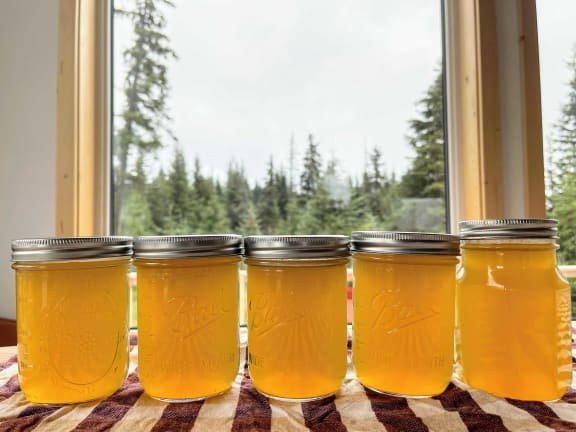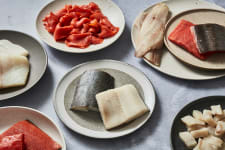
How to Make Stock Using Your Shrimp Shells
September 29th, 2025The Resourceful Art of Flavor Maximization
Don’t toss your shrimp shells! They are going to be the secret ingredient behind so many savory seafood meals. The shells of spot prawns or sidestriped shrimp are packed with flavor that are readily infused into a versatile stock. Shrimp stock stores well in the freezer, so it's an easy ingredient to have on hand.
Like any type of stock, shrimp stock can add a delectable layer of flavor to a variety of dishes. It can enhance homemade soups, chowders, and stews. Or, use it to cook risotto or grits for a richly flavored dish. You can even use a splash of shrimp stock to build a quick pan sauce.
Homemade shrimp stock can be used in place of any stock when called for in a recipe. Try it in these dishes:
Cajun Shrimp and White Cheddar Grits
How to Make Shrimp Stock
By Wild Alaskan Company
Prep time
10 minutes
Cook Time
20 minutes
Total time
30 minutes
Yield
4 cups
Ingredients
- Shells reserved from 2 (8 oz.) packs spot prawns or sidestriped shrimp
- Extra virgin olive oil
- 4 ½ cups water
- Salt (optional)
Instructions
1. Peel the shrimp. If the shrimp has roe attached to the shells, you can either leave it on or discard it.
2. Heat olive oil in a medium saucepan or pot over medium heat. Add shells and cook, stirring occasionally, until they turn opaque and pick up a subtle golden color, about 5 minutes.
3. Pour in water and bring the saucepan nearly to a boil. Reduce heat and let simmer for 15 minutes.
4. Carefully strain the stock into a heat safe bowl or container. Discard the shells. If desired, season to taste with salt.
5. You can use the stock immediately. Or, let it cool and store it in a covered container for another day. Refrigerate for up to 4 days; or, freeze for up to 3 months (for best flavor).
Consuming raw or undercooked meats, poultry, seafood, shellfish, or eggs may increase your risk of food-borne illness, especially if you have a certain medical condition. The FDA recommends an internal temperature of 145°F for cooked fish.





